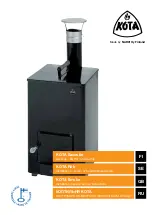
11
Getting Acquainted with the EON 210P Powered Mixer
This part of the EON 210P system houses the mixing board and power amplifier. You will connect all of the
microphones, musical instruments, external sound sources (like MP3 or CD players), headphones in addition to
any recording devices or additional speakers like a personal monitor, subwoofer or “Front of House” feed.
The Basics
While it looks complicated, the mixing board is actually a very simple device. A “mixing board” brings audio
sources “in” (through the inputs) and routes the signal to the outputs (MASTER VOLUME/SPEAKER OUTPUTS
or MONITOR OUTPUTS)). The mixer controls enable the user to affect the tone and/or volume in addition to
routing the signal and adding effects to individual input sources. The abundance of knobs is simply due to the
repetitive nature of the design.
Let’s look at the “inputs” first:
AUDIO INPUTS
The EON 210P has 8 inputs: 4 mono inputs and 2 stereo inputs.
All of the inputs will route to the speakers and to the MONITOR OUTPUT SECTION.
MONO MIC/LINE INPUTS
Moving from left to right there are 4 identical input strips comprised of (from top to bottom) a “peak LED”,
a combination input connector, MIC/LINE selector, Treble and Bass controls, a Reverb send and a channel
volume control.
E300993 37TY
October 5th, 2010
1 Effect Bypass: This turns all
effects off
2 Plate Reverb: Use with Vocals
and Acoustic Instruments
3 Room Reverb: Use with
Vocals, Acoustic and Electric
Instruments, Percussion,
Piano and General Applications
4 Slapback: Short Echo with
Repeats. For Lead Vocal,
Karaoke, Rockabilly
5 Large Hall Reverb: Use with
Lead Vocals, Brass or
Strings
EFFECT MENU










































